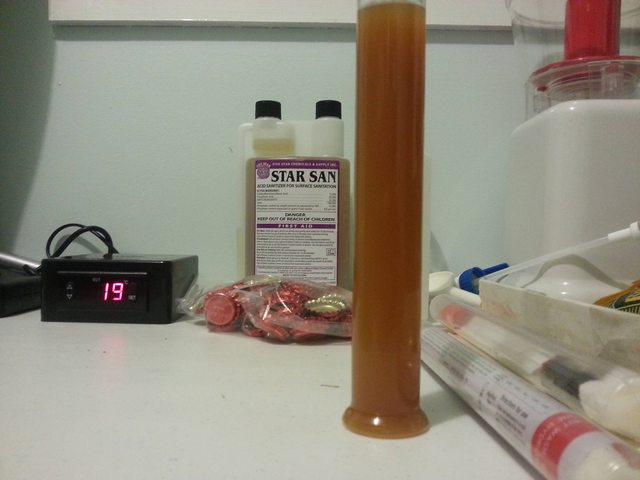Hey everyone!.
I've been a craft beer drinker for a long time and only just recently decided to take my hand up in home brewing.
on easter weekend (friday the 29th of March) I did my first home brew extract kit.
I used a cascade pale ale extract can with brew enchancer #15 and a small tea bag of armarillo hops
I only mixed 20 litres into the fermenter and pitched the yeast that came with the can at 22 degrees,
My original gravity was 1.050, the expected final gravity on the instructions under the lid is 1.004~1.006
It has now been two weeks, over the course of fermenting I have tried my best to maintain a temp of 19~22 degrees.
but once the temp dropped to about 15~16 degrees and I noticed a lot less activity on the airlock, like it almost stopped (this happened about Thursday the 4th of april) I flicked on the heater pad and got her back to about 22 degrees and the fermentation/airlock activity resumed as normal
It has been in the fermenter for 2 weeks now exactly. I tested my gravity reading last night because it is 24 hours before i intended to bottle and i got a gravity reading of 1.019~1.020 (hard to read these damn things).. Is this gravity reading a little too high? I gave it a taste and it tastes like a coopers pale ale with a bitter after taste, being non-carbonated and not aged in the bottle yet i expected this. I can see through the lid of the fermenter that there is NOTHING on top of the wort/beer, it clear and clean with a little bit of gunk on the side of the fermenter from fermentation. it all looks normal.
So I ask this! being a first time brewer, is it ok to bottle if i get another reading tonight of 1.019~1.020? Will it cause bottle bombs? is my yeast just going really slowly and should i leave it for longer? does it matter that i didn't add the extra 3 litres?
I've been a craft beer drinker for a long time and only just recently decided to take my hand up in home brewing.
on easter weekend (friday the 29th of March) I did my first home brew extract kit.
I used a cascade pale ale extract can with brew enchancer #15 and a small tea bag of armarillo hops
I only mixed 20 litres into the fermenter and pitched the yeast that came with the can at 22 degrees,
My original gravity was 1.050, the expected final gravity on the instructions under the lid is 1.004~1.006
It has now been two weeks, over the course of fermenting I have tried my best to maintain a temp of 19~22 degrees.
but once the temp dropped to about 15~16 degrees and I noticed a lot less activity on the airlock, like it almost stopped (this happened about Thursday the 4th of april) I flicked on the heater pad and got her back to about 22 degrees and the fermentation/airlock activity resumed as normal
It has been in the fermenter for 2 weeks now exactly. I tested my gravity reading last night because it is 24 hours before i intended to bottle and i got a gravity reading of 1.019~1.020 (hard to read these damn things).. Is this gravity reading a little too high? I gave it a taste and it tastes like a coopers pale ale with a bitter after taste, being non-carbonated and not aged in the bottle yet i expected this. I can see through the lid of the fermenter that there is NOTHING on top of the wort/beer, it clear and clean with a little bit of gunk on the side of the fermenter from fermentation. it all looks normal.
So I ask this! being a first time brewer, is it ok to bottle if i get another reading tonight of 1.019~1.020? Will it cause bottle bombs? is my yeast just going really slowly and should i leave it for longer? does it matter that i didn't add the extra 3 litres?





